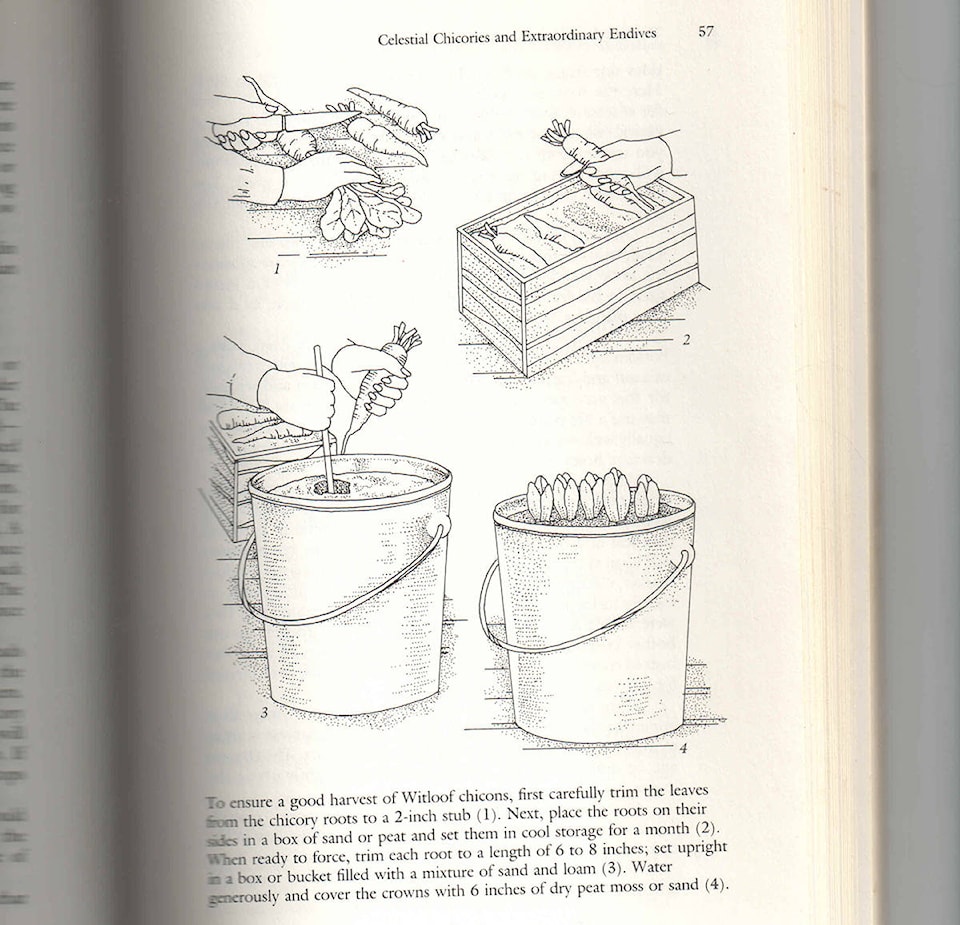By Mary Lowther
I haven’t bothered messing about with forcing witloof chicory to produce chicons during the winter because it looked like a daunting process, but when author Annie Proulx writes “Many of the most toothsome salad delicacies are grown this way. The prince of them all is the famous witloof chicory whose roots produce delectable chicories, prized for their ineffable table merits rather than their nutritional qualities”, I have to give it a try. I think that the nutritional content depends on how robust the roots grew in the soil.
Some witloof chicory is grown for the chicons that develop during winter; thick little cones of white leaves that grow from the roots brought inside in the winter. Although these chicons are also called Belgian or French endive, the Flemish term “witloof”, meaning “white leaf”, has stuck.
Proulx suggests we prepare a bed as soon as the ground can be worked in the spring, digging under the winter cover crop and adding compost and fertilizer. Two weeks later, sow a row of the chicory and cover that with Remay held off the ground to keep out ravenous, marauding birds that eschew the bird seed house in favour of MY garden seeds.
These chicories will grow all summer, undisturbed and uncut, unless they send up a flower stalk which should be cut off carefully without cutting the leaves. Come fall, after the first frosts, carefully dig up the roots without breaking them, trim the tops to about two inches and discard any roots narrower than half an inch wide. Bring them inside and lay them flat, side by side in a box of sand or coconut coir and store them in a cold room (0 to 5 C) for a month. This time period in cold storage fools them into thinking they’ve been through winter, so when they are resurrected they put on new spring-like growth.
Prepare the forcing bucket, using one that drains and is at least 17 inches (43 centimetres) deep. Fill the first 10 inches (25 centimetres) with a mixture of sand and garden soil. About a month before planning to eat some, bring out a few roots, trim them to six to eight inches (15 to 20 centimetres) long and bury them upright in the forcing bucket. Water them generously and add six more inches of sand on top. Store the bucket in a slightly warmer place, between 10 and 16 C. Any warmer and they won’t grow tight and solid. After three or four weeks they’ll be ready for harvest and a salad. They can be snapped off just above the crown and the roots left to produce another crop or two. Re-water them again and leave them alone for another three to four weeks before harvesting them.
I can see why our gardening ancestors began experimenting with forcing roots inside because I’m getting mighty itchy to be gardening myself and at least this would be one outlet to keep me from nagging David to entertain me.
Please contact mary_lowther@yahoo.ca with questions and suggestions since I need all the help I can get.
